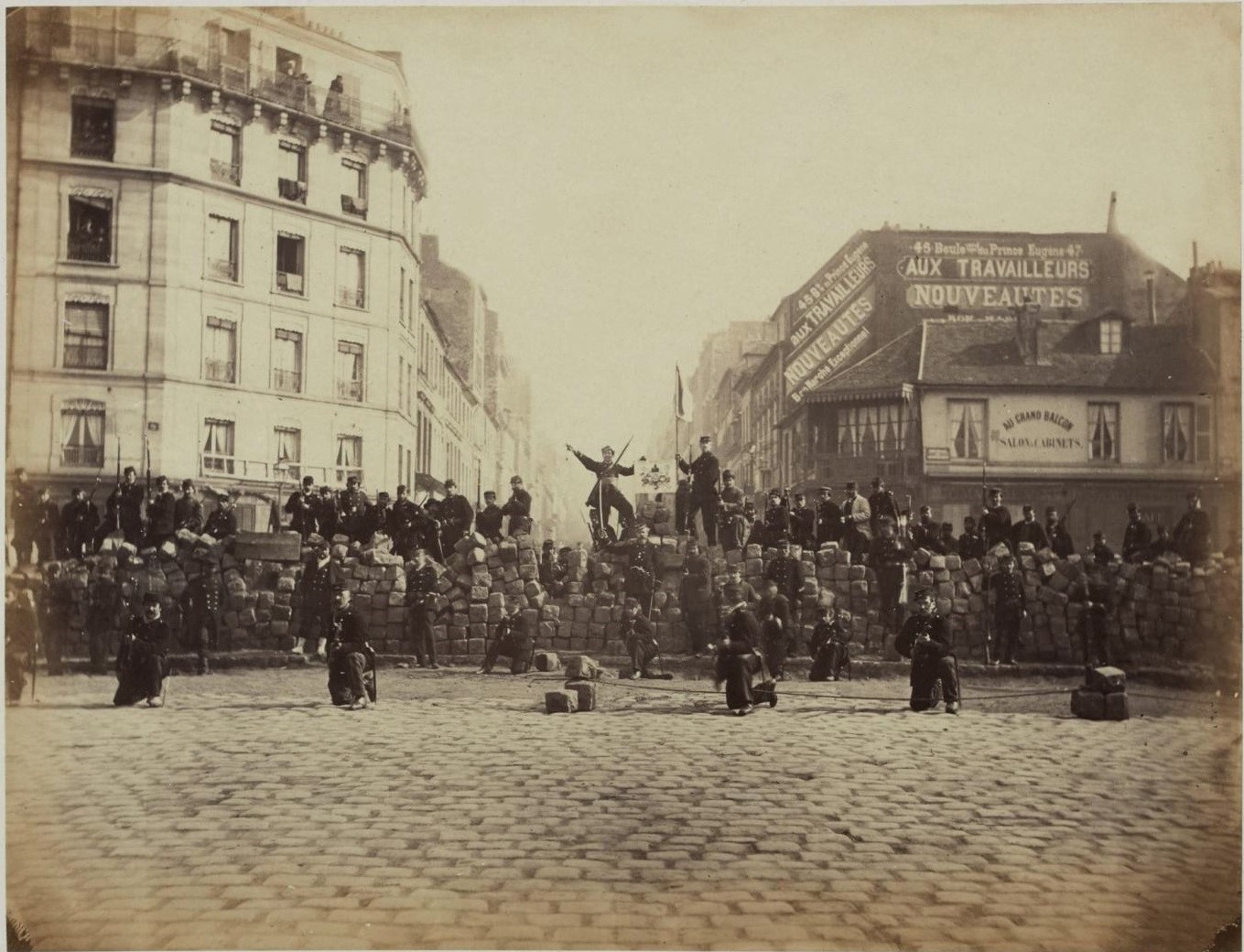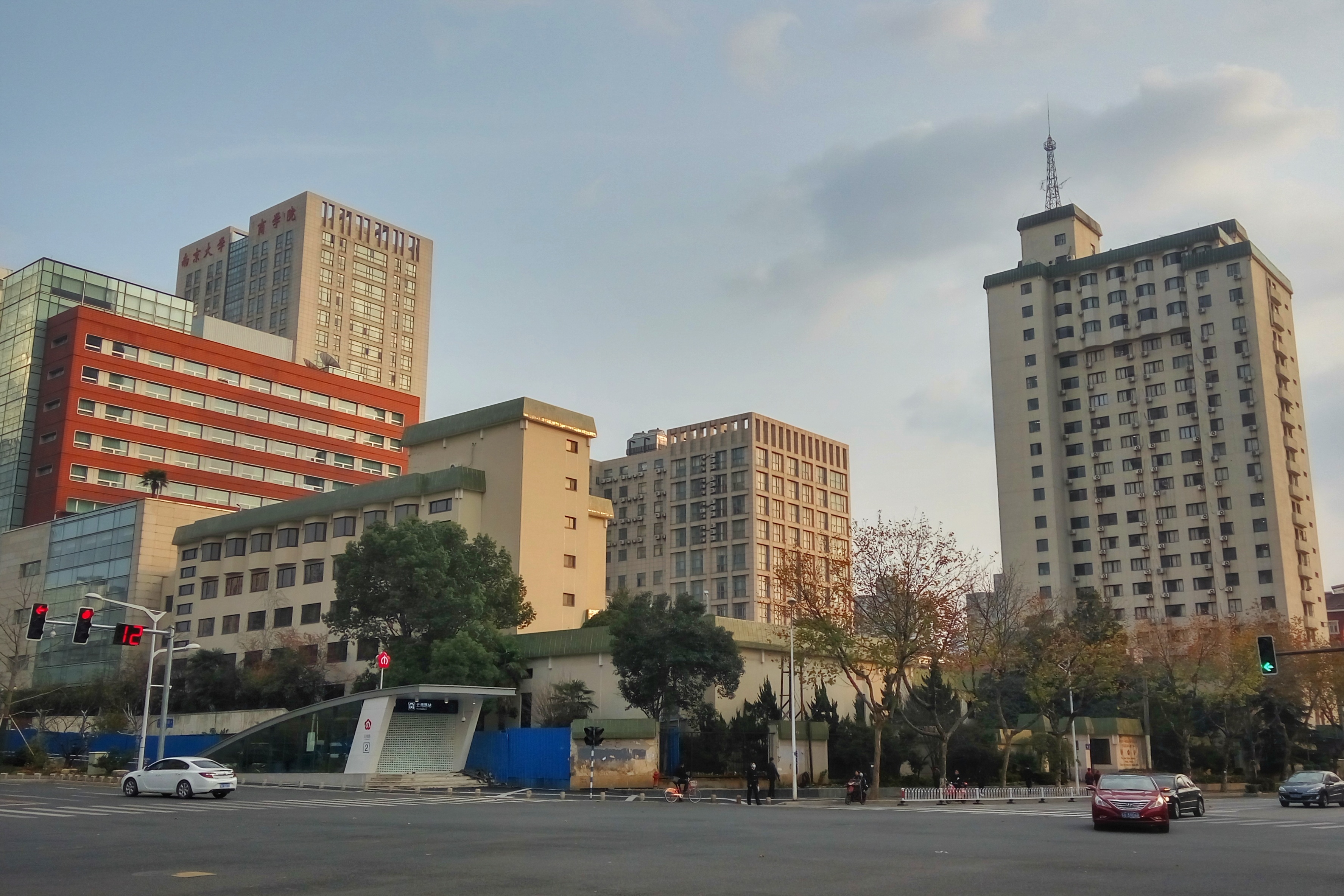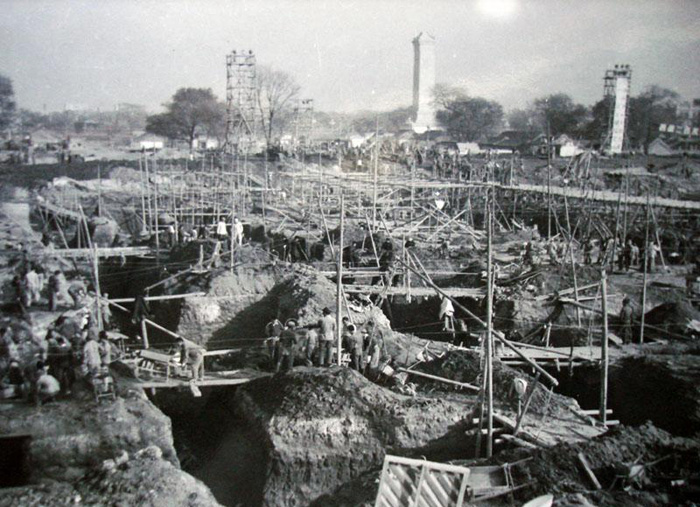|
Mao Yisheng
Dr. Mao Yisheng a.k.a. Thomson Eason Mao (; January 9, 1896 – November 12, 1989) was a Chinese structural engineer and social activist. He was one of the most famous Chinese structural engineers, a pioneer in bridge construction, and a social activist. Early life Mao was born in Zhenjiang, Jiangsu province. He entered Jiaotong University's Tangshan Engineering College (now Southwest Jiaotong University) and earned his bachelor's degree in civil engineering in 1916. He earned his master's degree from Cornell University and earned the first Ph.D. ever granted by the Carnegie Institute of Technology (now Carnegie Mellon University) in 1919. His doctoral treatise entitled ''Secondary Stress on Frame Construction'' is treasured at the Hunt Library of Carnegie Mellon University and the university constructed a statue of him on campus in his honor. Career Engineer Mao was regarded as the founder of modern bridge engineering in China. With regard to traditional Chinese bridges, he o ... [...More Info...] [...Related Items...] OR: [Wikipedia] [Google] [Baidu] |
Mao (surname)
Mao is the romanization of several Chinese family names, including common names 毛 (Máo), 茅 (Máo) and some rare names 茆 (Máo), 卯 (Mǎo), 貌 (Mào) etc. 毛 originated from Ji ( zh, c=姬, p=Jī), the clan name of Zhou dynasty. 毛 is the 106th surname in the Hundred Family Surnames, and ranks 87th largest number of people with this surname in China (2007). 茅 is the 119th surname in Hundred Family Surnames. 一、姓氏源流 茅(Máo)姓源出有一: Notable people surnamed Mao 毛 * Mao Chaofeng (b. 1965), executive vice governor of *[...More Info...] [...Related Items...] OR: [Wikipedia] [Google] [Baidu] |
Social Activist
Activism consists of efforts to promote, impede, direct or intervene in social, political, economic or environmental reform with the desire to make Social change, changes in society toward a perceived common good. Forms of activism range from Mandate (politics), mandate building in a community (including writing letters to newspapers), petitioning elected officials, running or contributing to a political campaign, preferential patronage (or boycott) of businesses, and demonstrative forms of activism like rallies, street marches, Strike action, strikes, sit-ins, or hunger strikes. Activism may be performed on a day-to-day basis in a wide variety of ways, including through the creation of art (artivism), computer hacking (hacktivism), or simply in how one chooses to spend their money (economic activism). For example, the refusal to buy clothes or other merchandise from a company as a protest against the Exploitation of labour, exploitation of workers by that company could be cons ... [...More Info...] [...Related Items...] OR: [Wikipedia] [Google] [Baidu] |
Nanjing University
Nanjing University (NJU) is a public university in Nanjing, Jiangsu, China. It is affiliated and sponsored by the Ministry of Education. The university is part of Project 211, Project 985, and the Double First-Class Construction. The university is a member of the C9 League. Established in 1902 as Sanjiang Normal School, Nanjing University underwent a number of name changes, such as Nanjing Higher Normal School, National Southeastern University and National Central University, until it was renamed Nanjing University in 1950. It merged with the University of Nanking in 1952. Nanjing University has four campuses: the Xianlin campus in the northeast of Nanjing, the Gulou campus in the city center of Nanjing, the Pukou campus in the Pukou District of Nanjing, and the Suzhou campus in the city of Suzhou. Faculties Its faculty, including part-time faculty, includes more than twenty Nobel Laureates engaged in teaching. The university is a Double First-Class Construction u ... [...More Info...] [...Related Items...] OR: [Wikipedia] [Google] [Baidu] |
National Central University
National Central University (; abbreviated NCU; ) is a public research university based in Taiwan. It was founded in 1902 in Nanjing; initially located in Miaoli after moving to Taiwan, it relocated to Zhongli in 1962 and developed into a comprehensive university. NCU is the first university in Taiwan to research industrial economics and economic development (Taiwan's Consumer Confidence Index is released monthly by NCU). NCU is a member of AACSB. NCU is one of the six national universities in research selected by the Ministry of Education, organized into eight colleges. History Established in 1902 as Sanjiang Normal School, National Central University underwent a number of name changes, such as Nanjing Higher Normal School, National Southeastern University and currently, National Central University. It was based in Nanking, but after the Chinese Communist Party took control of the mainland in 1949, the National Central University was re-established in Taiwan in 1962 as ... [...More Info...] [...Related Items...] OR: [Wikipedia] [Google] [Baidu] |
National Southeastern University
Nanjing University (NJU) is a public university in Nanjing, Jiangsu, China. It is affiliated and sponsored by the Ministry of Education. The university is part of Project 211, Project 985, and the Double First-Class Construction. The university is a member of the C9 League. Established in 1902 as Sanjiang Normal School, Nanjing University underwent a number of name changes, such as Nanjing Higher Normal School, National Southeastern University and National Central University, until it was renamed Nanjing University in 1950. It merged with the University of Nanking in 1952. Nanjing University has four campuses: the Xianlin campus in the northeast of Nanjing, the Gulou campus in the city center of Nanjing, the Pukou campus in the Pukou District of Nanjing, and the Suzhou campus in the city of Suzhou. Faculties Its faculty, including part-time faculty, includes more than twenty Nobel Laureates engaged in teaching. The university is a Double First-Class Construction univers ... [...More Info...] [...Related Items...] OR: [Wikipedia] [Google] [Baidu] |
National Chiao Tung University
National Chiao Tung University (NCTU) was a public research university in Hsinchu, Taiwan. Established in 1896 as Nanyang Public School by an imperial edict of the Guangxu Emperor, it was one of China's leading universities. After the Chinese Civil War, NCTU was re-established by former Chiao Tung University faculty and alumni in Taiwan in 1958. NCTU was selected by Taiwan's Ministry of Educations as one of the seven national universities focused on research in 2002. It was subsequently chosen to pursue all-around excellence with "versatile international competitiveness to continuously strengthen international academic influence and visibility". NCTU was merged with National Yang-Ming University into the newly formed National Yang Ming Chiao Tung University on 1 February 2021. History Qing dynasty National Chiao Tung University was founded in Xujiahui, the suburbs of Shanghai in 1896, sixteen years before the birth of the Republic of China, at the suggestion of Sheng ... [...More Info...] [...Related Items...] OR: [Wikipedia] [Google] [Baidu] |
Great Hall Of The People
The Great Hall of the People is a state building situated to the west of Tiananmen Square in Beijing. It is used for legislative and ceremonial activities by the government of the People's Republic of China. The People's Great Hall functions as the meeting place for the full sessions of China's legislature, the National People's Congress, which occurs every year during March along with the national session of the Chinese People's Political Consultative Conference, a political advisory body. The Great Hall is also the meeting place of the National Congress of the Chinese Communist Party, which, since the 12th National Congress of the Chinese Communist Party, 12th conference in 1982, has occurred once every five years, and the party's Central Committee of the Chinese Communist Party, Central Committee which meets approximately once a year. The Hall is also used for many special events, including national level meetings of various social and political organizations, large anniversar ... [...More Info...] [...Related Items...] OR: [Wikipedia] [Google] [Baidu] |
Wuhan
Wuhan; is the capital of Hubei, China. With a population of over eleven million, it is the most populous city in Hubei and the List of cities in China by population, eighth-most-populous city in China. It is also one of the nine National central city, national central cities and the second most livable city in China. Wuhan historically served as a busy city port for commerce and trading with some crucial influences on Chinese history. The name "Wuhan" came from the city's historical origin from the conglomeration of Wuchang, Wuhan, Wuchang, Hankou District, Hankou, and Hanyang District, Hanyang, which are collectively known as the "Three Towns of Wuhan" ( zh, s=武汉三镇, labels=no). Wuhan lies in the eastern Jianghan Plain, at the confluence of the Yangtze river and its largest tributary, the Han River (Hubei), Han River, and is known as "Nine Provinces' Thoroughfare" ( zh, labels=no, t= ). Wuhan was the site of the 1911 Wuchang Uprising against the Qing dynasty which Dyna ... [...More Info...] [...Related Items...] OR: [Wikipedia] [Google] [Baidu] |
Wuhan Yangtze River Bridge
The Wuhan Yangtze Great Bridge (), commonly known as Wuhan First Yangtze Bridge, is a double-deck road and rail bridge across the Yangtze River in Wuhan, in Central China. At its completion in 1957, the bridge was the easternmost crossing of the Yangtze, and was often referred to as the "First Bridge of the Yangtze". The bridge extends 1.6 kilometers (1 mile) from Turtle Hill in Hanyang, on the northern bank of the Yangtze, to Snake Hill in Wuchang, on the southern bank of the Yangtze. Plans for the bridge's construction were first made in 1910. A total of four exploratory surveys were made between 1913 and 1948 to identify a suitable site, but economic limitations and the combination of World War II and the Chinese Civil War prevented the bridge's building until the 1950s. Actual construction began in September 1955 and was completed in October 1957. The upper level of the bridge is a two-way, four-lane automobile highway. The lower level is a double-track railway on th ... [...More Info...] [...Related Items...] OR: [Wikipedia] [Google] [Baidu] |
Hangzhou
Hangzhou, , Standard Mandarin pronunciation: ; formerly romanized as Hangchow is a sub-provincial city in East China and the capital of Zhejiang province. With a population of 13 million, the municipality comprises ten districts, two counties, and one county-level city in northwestern Zhejiang. It is situated at the head of Hangzhou Bay and the estuary of the Qiantang River. Established as a county seat in 221 BC, Hangzhou later served as the capital of the Wuyue Kingdom (923–997) and the Southern Song dynasty (1138–1276). The city has three UNESCO World Heritage Sites, which are the West Lake Cultural Landscape, the Grand Canal, and the Archaeological Ruins of Liangzhu City. Hangzhou is designated as a sub-provincial city. Hangzhou ranked ninth in GDP among mainland Chinese cities and 14th according to the Global Innovation Index. The city hosts the headquarters of Alibaba Group, Ant Group, DeepSeek, Geely, and NetEase. According to the Nature Index, it ... [...More Info...] [...Related Items...] OR: [Wikipedia] [Google] [Baidu] |
Qiantang River Bridge
The Qiantang River Bridge () is a combined road and railway bridge across the Qiantang River at Hangzhou in Zhejiang Province, China. History The bridge was designed by Mao Yisheng and built by Dorman Long. Construction, which started on 8 August 1934 was completed on 29 September 1937. This two-tier truss bridge comprises 16 spans and measures 1,072 metres long. On 17 November 1937, during the Battle of Shanghai, the Bridge Construction Office were ordered to make preparations to blow up the bridge to delay the advancing Imperial Japanese Army.Schoppa, p. 243 Gallery of images Puente Qiantang.jpg, General view Puente Qiantang 2.jpg , View of the left bank access Qiantang River Bridge HXD1D 2016 January.jpg, Passing train. Hangzhou Qiantangjiang Daqiao 20120518-11.jpg, Double deck detail. Qiantang River Bridge 01.jpg , View of the upper deck. Qiantang River Bridge, 2015-03-01 31.jpg, View of the accessa arches on the left bank. Qiantang River Bridge, 2015-03-01 17.jpg, General v ... [...More Info...] [...Related Items...] OR: [Wikipedia] [Google] [Baidu] |
Five-Pavilion Bridge
The Five-Pavilion Bridge, also known as the Lotus Bridge and by other names, is a covered stone arch footbridge in the Slender West Lake National Park in Hanjiang District, Yangzhou, in Jiangsu, China. It is one of the Four Bridges in Misty Rain, one of the 24 Views of Yangzhou under the Qing, and has become a landmark of the city. Names The bridge is called the "Five-Pavilion Bridge". Its alternative name, "Lotus Bridge" or "Lotus Blossom Bridge", is a translation of the bridge's original Chinese name, either named for the Lotus Blossom Dyke that the bridge connects to on its southern side or for a supposed resemblance of its pavilions to the petals of a lotus flower. History The bridge was constructed in 1757. (Qianlong 22), connecting the residences on the north bank of the lake to the back of the Temple of the Lotus Mind to the south. Its construction was funded by local salt merchants to welcome the Qianlong Emperor of the Qing dynasty during his second southern tour of ... [...More Info...] [...Related Items...] OR: [Wikipedia] [Google] [Baidu] |




